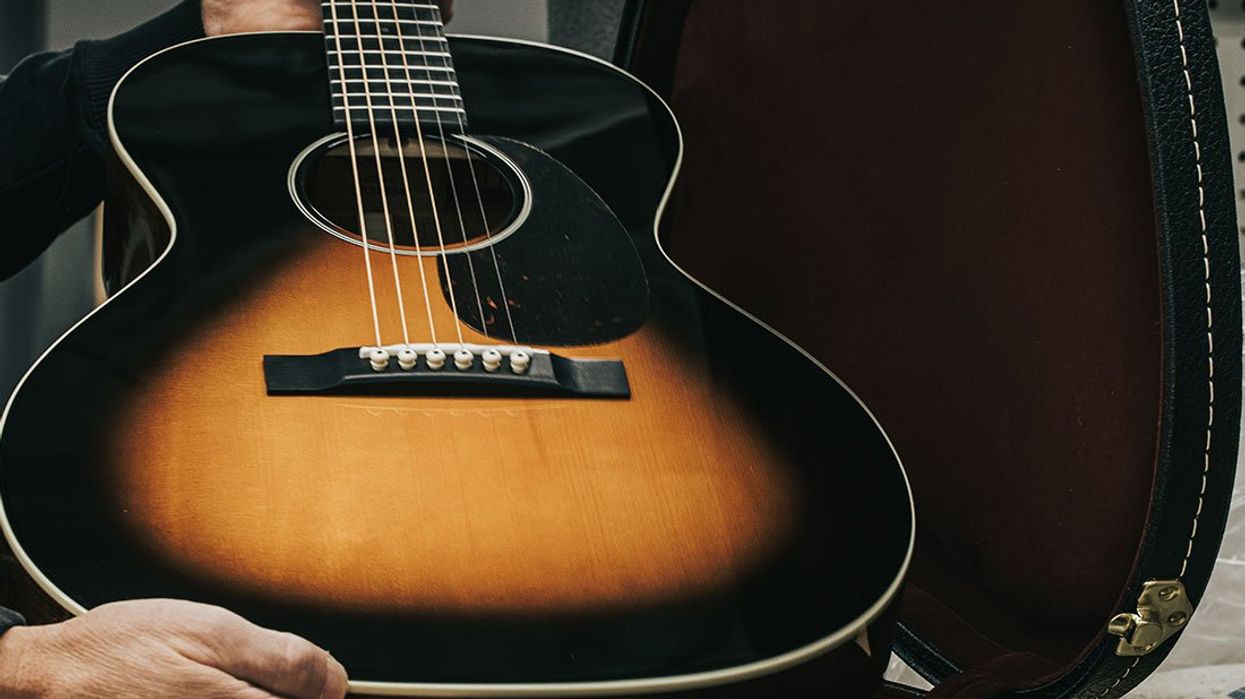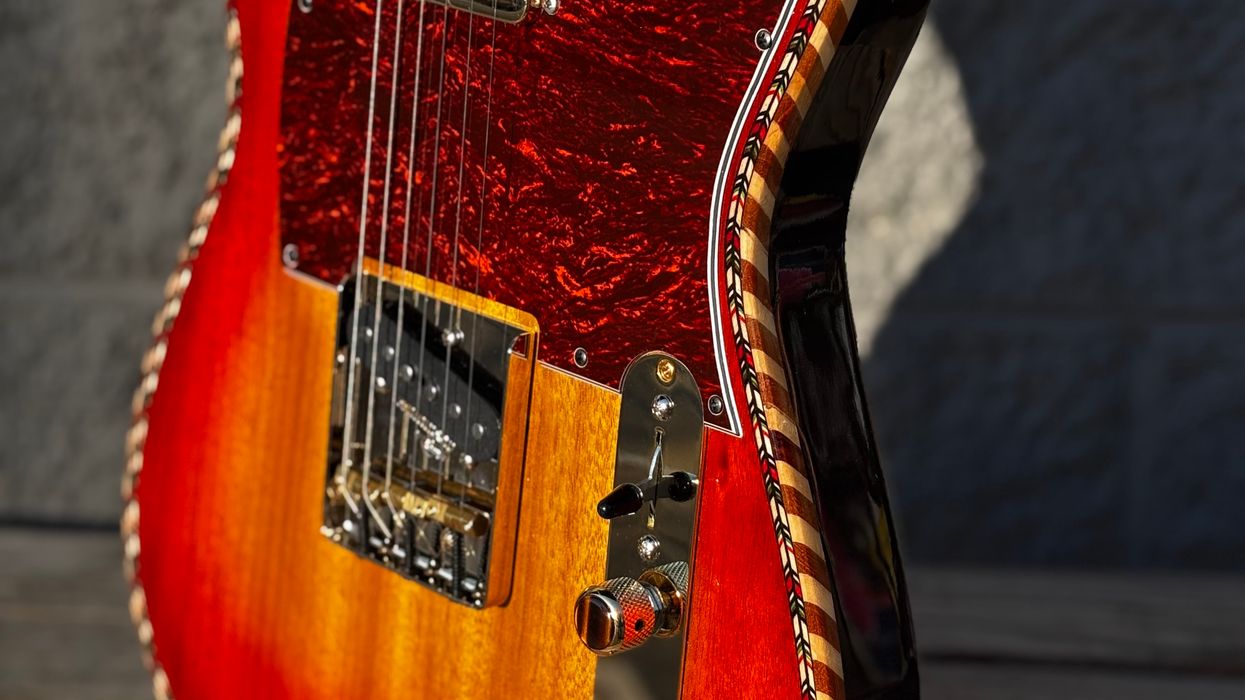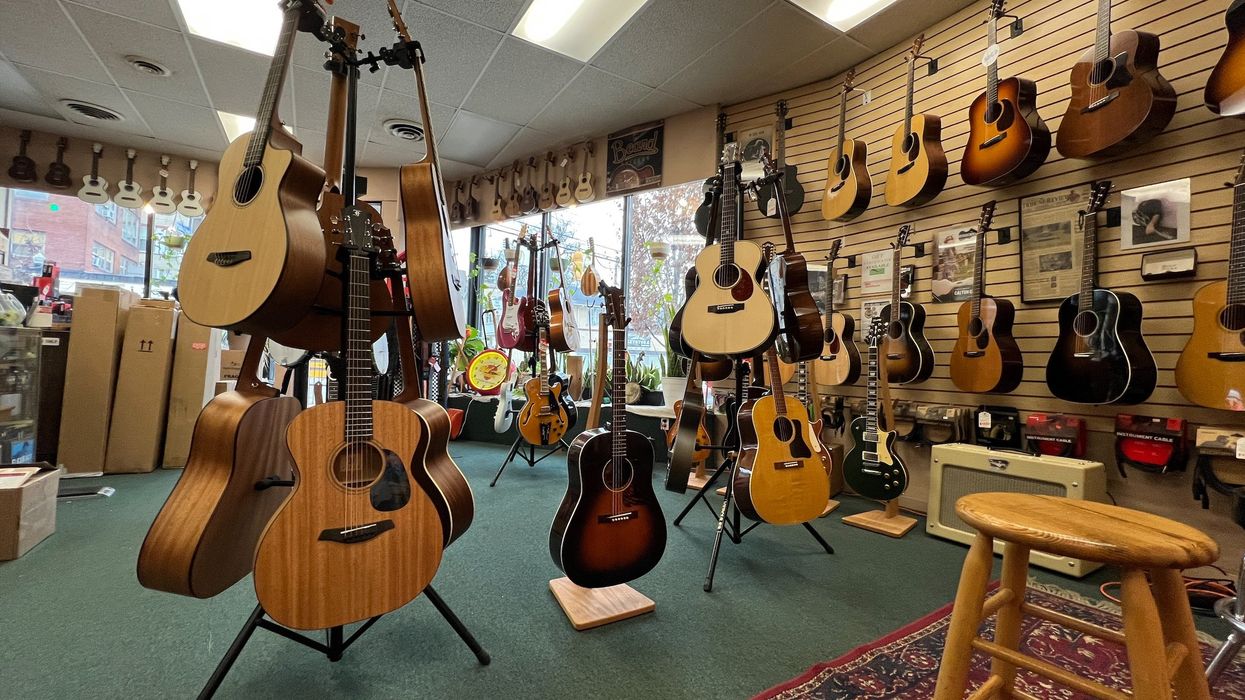Here in Nazareth, Pennsylvania, we’re going from the dry, cold conditions of winter to the warmer, humid conditions of spring. As you probably know, these fluctuations can impact the well-being of your beloved instruments. So, here are some tips from our team on how to effectively care for your acoustic guitars during these seasonal shifts.
Before delving into specific tips, it's crucial to understand how seasonal changes affect acoustic guitars. Wood, the primary material in our guitars, is highly responsive to variations in temperature and humidity. When exposed to dry and cold conditions, wood tends to contract, leading to potential issues like cracking and changes in playability. Warm and humid conditions can cause the wood to expand, resulting in swelling, warping, or changes in tone.
Combating Dryness
As winter transitions to spring, the first challenge guitar owners face is the lingering dryness from the colder months. Low humidity levels can pose a threat to your acoustic's health, making it crucial to take preventive measures. One option is using a room humidifier to maintain an optimal humidity level for your instrument. Aim for a relative humidity of around 45 to 55 percent, as this range is ideal for preserving the integrity of the wood.
Regularly monitoring the humidity in the guitar’s environment is essential. Hygrometers, inexpensive devices that measure humidity levels, can also be placed in the guitar case or the room where it's stored. This allows you to make necessary adjustments promptly. In extremely dry conditions, consider using a guitar humidifier inside the case to provide localized moisture, preventing the wood from drying out.
Guitars that use alternative materials like high-pressure laminate (HPL) are better equipped to handle many of the issues that arise with seasonal changes. Our recently reconfigured X Series includes different models with HPL backs, sides, and tops in various wood grain patterns. They’re durable, reliable, affordable, and still maintain that classic Martin tone, while not being affected by changes in temperature and humidity.
Gradual Acclimation
And as the temperatures rise during the transition to spring, it’s important to acclimate your guitar gradually. Sudden changes in temperature can lead to stress on the instrument. When out playing live, give your guitar time to adjust to the changing environment by keeping it in its case as long as possible. This gradual acclimation helps prevent the wood from expanding too rapidly, reducing the risk of structural issues.
Humidity Control
While spring brings warmer temperatures, it also introduces higher humidity levels. We suggest using dehumidifiers or air conditioning to maintain a balanced humidity level. In addition to controlling the overall humidity in your home, storing your guitar in a hardshell case with moisture-absorbing packets can provide an extra layer of protection against excessive moisture.
Regularly inspecting your guitar for any signs of damage, like cracks or loose braces from swelling wood, and changes in playability, like unusually high or low action, is crucial during the warmer seasons. Addressing issues promptly, by taking the steps mentioned above, can prevent long-term damage and ensure the longevity of your instrument.
Year-Round Maintenance
Regardless of the season, regular maintenance is key to preserving your acoustic guitar’s health. Keeping your instrument clean and well-hydrated is important. Using high-quality guitar polishes, cleaners, protectants, and detailers can help maintain the wood's moisture and protect it from environmental factors. It’s crucial to choose products specifically designed for acoustic guitars to avoid any adverse effects. By following this advice, you can ensure that your instrument remains in optimal condition despite the changing seasons. If you’re a Martin owner, you can also visit our website to find an authorized Martin service center near you to help you with routine maintenance and repairs for your guitars.
Whether it’s combating dryness with humidifiers, gradually acclimating to warmer temperatures, or controlling humidity during the spring, these tips will help you safeguard your acoustic guitar and enjoy its beautiful tones for years to come.












![Rig Rundown: Russian Circles’ Mike Sullivan [2025]](https://www.premierguitar.com/media-library/youtube.jpg?id=62303631&width=1245&height=700&quality=70&coordinates=0%2C0%2C0%2C0)





